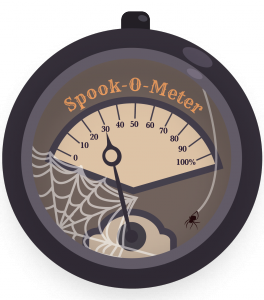Los Angeles is supposed to be the City of Stars, but once those stars fade, where do they go? Do they stay behind, forever attached to their final location, spooking guests who dare to enter their domain? Or do they just simply disappear? Each week, Daily Bruin columnist Eli Countryman will set out to discover the truth by exploring supposedly haunted places in the Los Angeles area, rating their spookiness so you don’t have to.
Counterintuitive as it sounds, The Comedy Store can sometimes deliver chilling tales instead of laughs.
A popular stand-up comedy club on Sunset Boulevard, the establishment is haunted by a grim history. Before becoming The Comedy Store in the 1970s, the building was a Mafia-controlled nightclub called Ciro’s. The basement, which has since been renovated, was supposedly used to torture and kill those who posed a threat to the secrecy of the Mafia. Even after the transition from organized crime to comedy, a former employee jumped to his death from a nearby building and landed in front of The Comedy Store after the club did not allow him to perform there. Interested in the supposed ghosts haunting the building, I scheduled a private tour of the premises.
The Comedy Store has multiple showrooms, including the main stage and a space known as the Belly Room. Though nothing online explains the name for the upstairs area, general manager Jody Barton said it may have something to do with the back-alley abortions performed on pregnant prostitutes during the building’s time as a club. Within the room, one wall is covered with mirrors, and red neon lights complete the darker ambiance. The lighting lends itself to spooky vibes when nobody else is in the room, and the mirrors could easily create strange shadows, but nothing out of the ordinary occurred when I walked through.
The tour also led to a back room used to access the sound booth. I ascended a set of stairs in a dimly lit hall to where Barton said some employees once playfully experimented with a Ouija board. Supposedly, the door to the side of the staircase flew open and they all fled in fear. When I walked into the hall where this supposedly took place, I noticed a couple of holes in the wall – if you crawl through one, you get to the sound booth – and the dim lighting, which created an unsettling mood. Though the room felt spookier than the revamped main stage, it may have just been the building’s aging condition rather than the presence of a lingering ghost.
Mike Schmidt, one of The Comedy Store’s development comics, then took me and Barton to the back entrance of the building, where he explained one ghostly encounter he knew about: One of the employees thought they saw someone staring in through the door’s rectangular window, but when they went to open the door, the prying person drifted up and away. This was one of multiple stories of people watching humanoid figures do impossible things, he said. One ghost has even been known to walk through the tables arranged in the main room, according to Schmidt.
After the tour, Barton brought over longtime performer Argus Hamilton, who stars in the livestream “The Comedy Store Tonight.” As part of the generation of “baby boomer comics,” Hamilton said an upper part of the building used to have arcade games like Galaga. While playing the games, he and his fellow comics would often spot movement in their peripheral vision, but turn to find nothing.
Hamilton said he knows of other events that have unfolded in the building since his gaming days. A sketch artist who claimed she could see ghosts and was unversed in the comedy scene came in and sensed an entity, he said. What she ended up drawing looked similar to comic Ollie Joe Prater, who had performed at The Comedy Store and died in 1991.
While the stories surrounding The Comedy Store often created a sense that the building should be creepy, nothing spooky happened while I explored the building. The creepiest thing I saw was actually the glass piano-shaped table in a back room reserved for the night’s performers. Nicknamed “the coke table,” it was not hard to imagine the many famous noses that had rubbed their way across the surface.
Neon signs and mirrors made the comic club more aesthetically pleasing than spooky, but the stories were nothing to laugh about.

